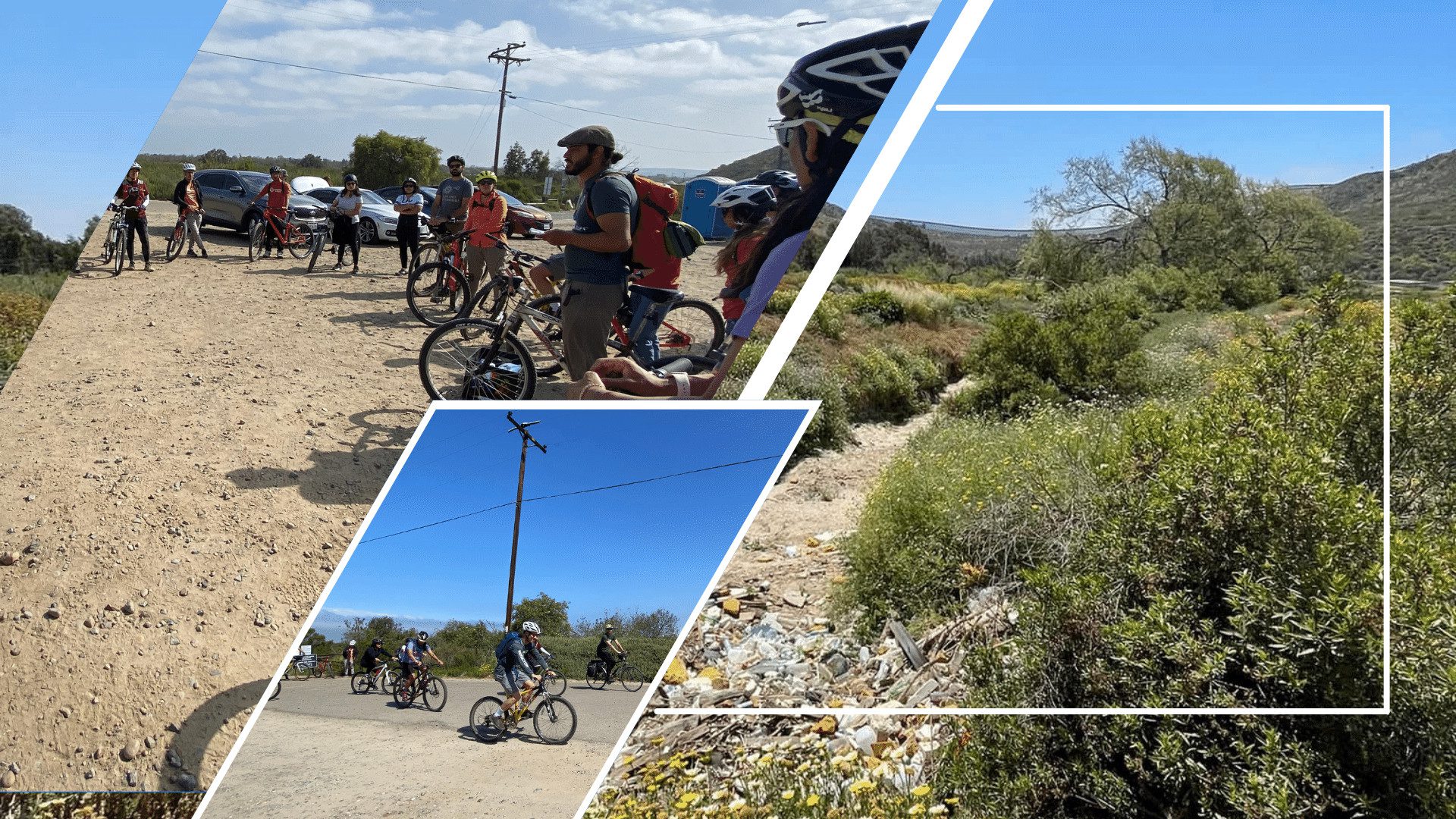Wheels on the Watershed: Environmental Justice at the Border
We joined outdoor advocates and environmental leaders last month for a community bicycling tour reflecting on decades of environmental injustice in the Tijuana River Watershed. Latino Outdoors San Diego led cyclists to explore ten miles of biodiverse terrain in the beautiful Tijuana River Valley (TRV), with several pit stops to hear personal accounts and calls to action from San Diego Coastkeeper staff, community activists, and leaders.
“Wheels on the Watershed tells the story of the water that flows through this region,” says Manuel Belmonte, Program Coordinator for Latino Outdoors. “We listen to the diverse voices speaking out against pollution and learn how it impacts our lives and the places we love.”
The Toxic Border Sewage Crisis
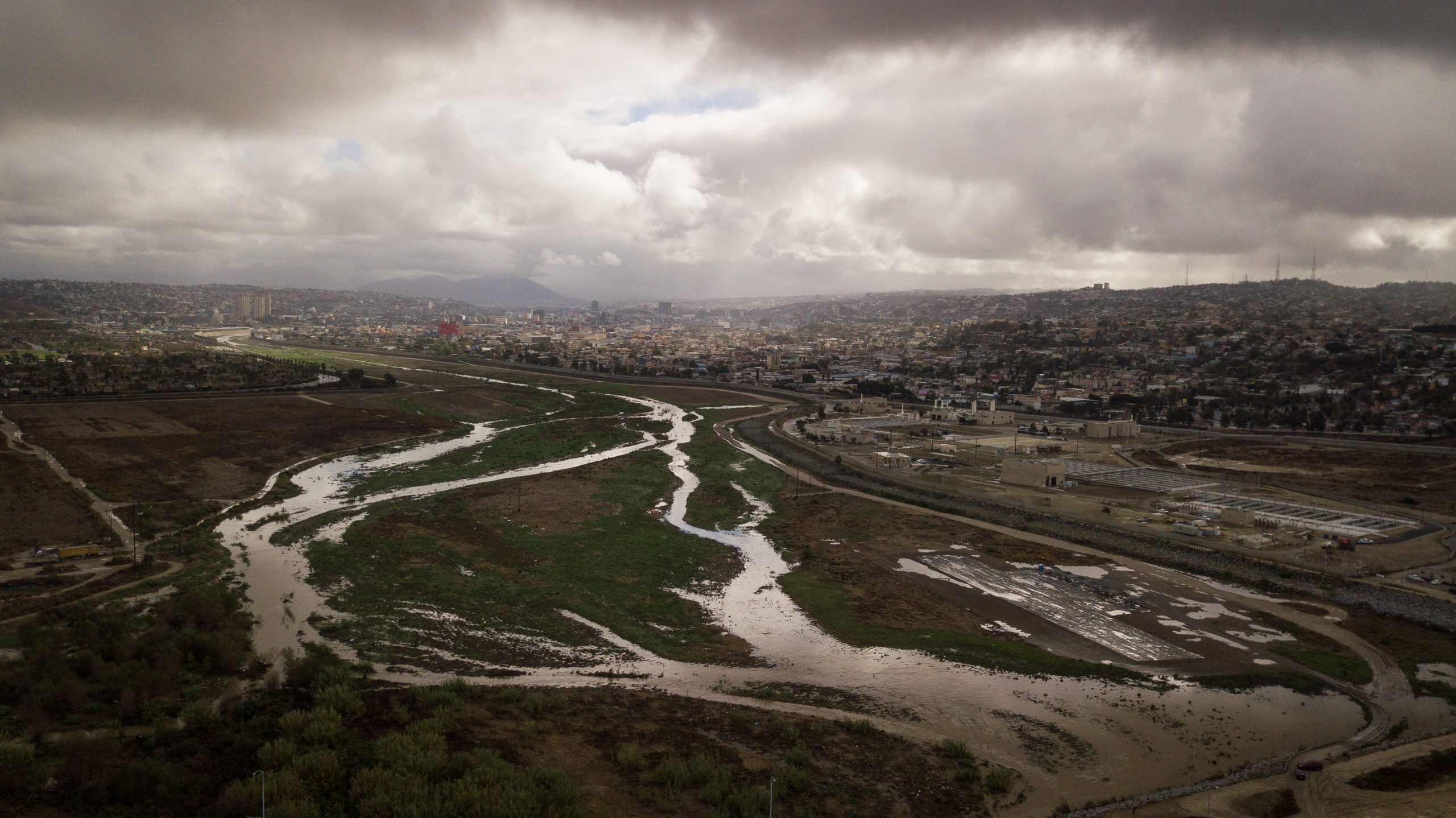

Many San Diegans are familiar with the toxic sewage running through the Tijuana River Estuary, just north of the U.S.-Mexico border. Last year, border beaches were closed for 300 days due to constant pollution flows. Fortunately, solutions to this decades-old environmental catastrophe are within sight. The federal government committed $300 million to border water infrastructure improvements in November 2021, and additional federal, state, and local funding efforts are progressing.
We discussed and learned about these developments during the tour, along with historical context and personal accounts from community leaders on the frontlines of this ongoing environmental crisis. As the largest remaining coastal wetland in Southern California, a healthy Tijuana River estuary would clean the water that flows through it, sequester carbon from the atmosphere, protect against flooding, and provide critical habitat for wildlife.
Touring the Tijuana River Watershed
-
- South Bay International Wastewater Treatment Plant
- Arroyo Cañon Matadero Trash Wash
- Tijuana River Valley Regional Park Campground
- Spooner’s Mesa
- Border Field State Park
Hazardous Waste Tires in the Tijuana River Valley
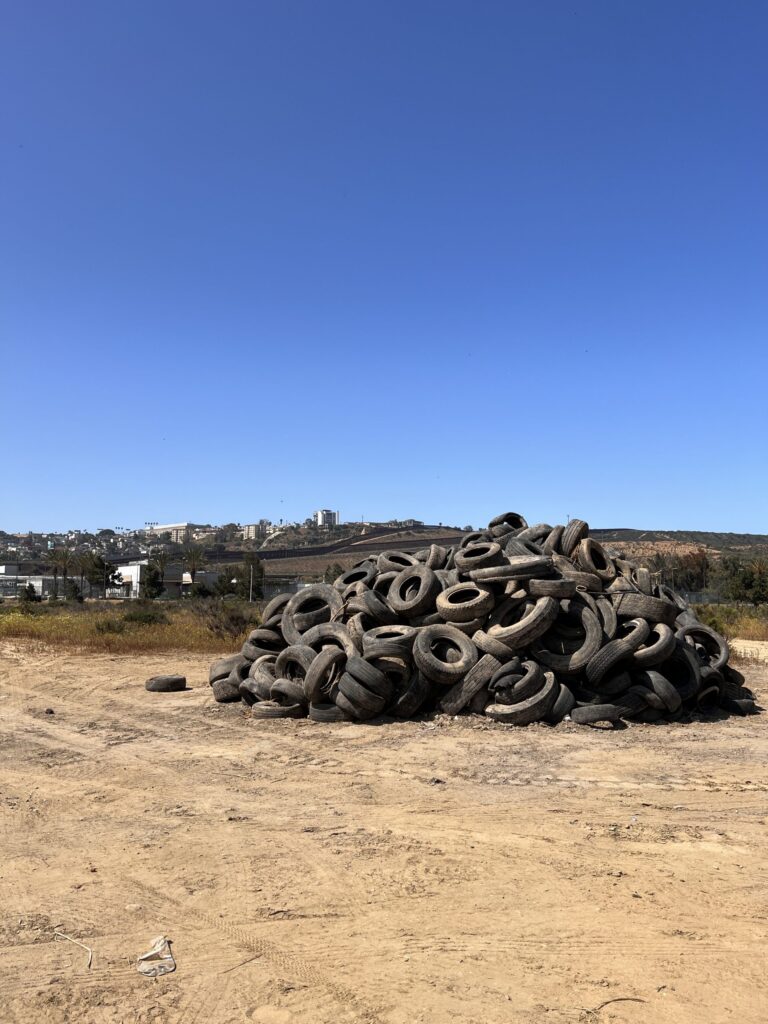  |
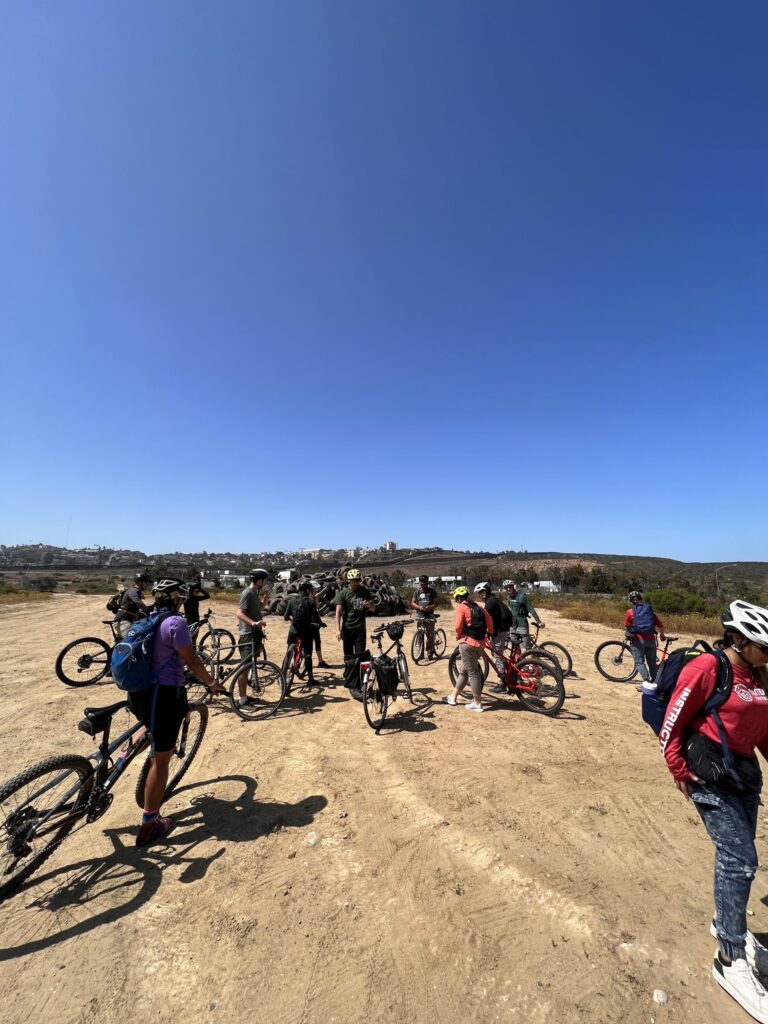  |
Our convoy stopped at a giant pile of automobile tires near our first stop. One of the area’s unique pollution issues is a near-constant flow of discarded car tires down the Tijuana River and into the river valley. As many of these tires originate in San Diego, they offer a good analogy for the binational nature of TRV pollution issues. Tires are regularly sold to dealers in Baja when they’re no longer serviceable in California. After a short lifespan in Baja, they’re often used as makeshift revetments by residents of the Tijuana River colonias or informal squatter villages. Sooner or later, most make their way back to the U.S. via the river.
The tires are hazardous waste in the U.S., costing significant state resources to dispose of properly. Surfrider Foundation San Diego and Outdoor Outreach are both supporting SB-1181, also called Solid Waste: Waste Tires, from the office of Senator Ben Hueso, which seeks to track the binational tire trade to determine to what extent they originate in California.
South Bay International Wastewater Treatment Plant
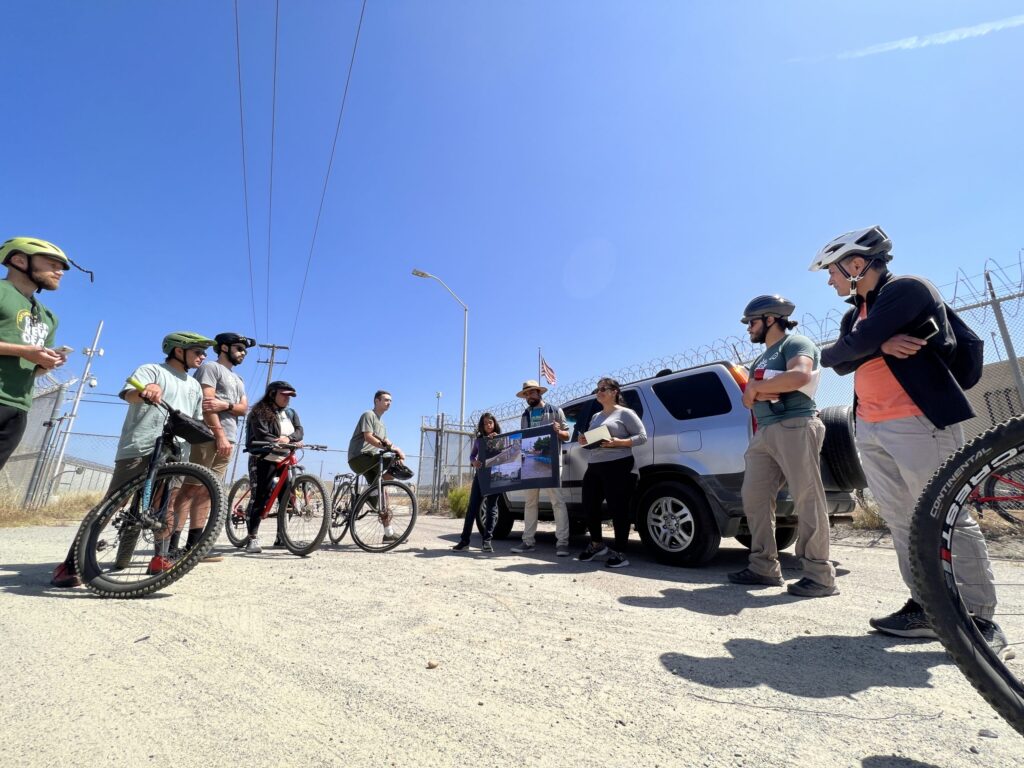

Our first tour stop was the South Bay International Wastewater Treatment Plant. There we met Aníbal Méndez, the director of Environmental Health Coalition’s Border Environmental Justice Campaign. With the help of his daughter, Aníbal held up photographs and maps while sharing stories and firsthand life experiences across the border. He spoke of the origins of the Tijuana River, its many names and shapes as it crosses political borders and landscapes, and the nature of water as a shared resource, especially in a watershed spanning two countries. While navigating the intricacies of U.S.-Mexico economic and environmental border relations is a part of the campaign, most importantly, Aníbal works directly with communities to understand the human impact of our international trade agreements – specifically the American-owned manufacturing plants (or maquiladoras) along the Tijuana River.
Arroyo Cañon Matadero Wash
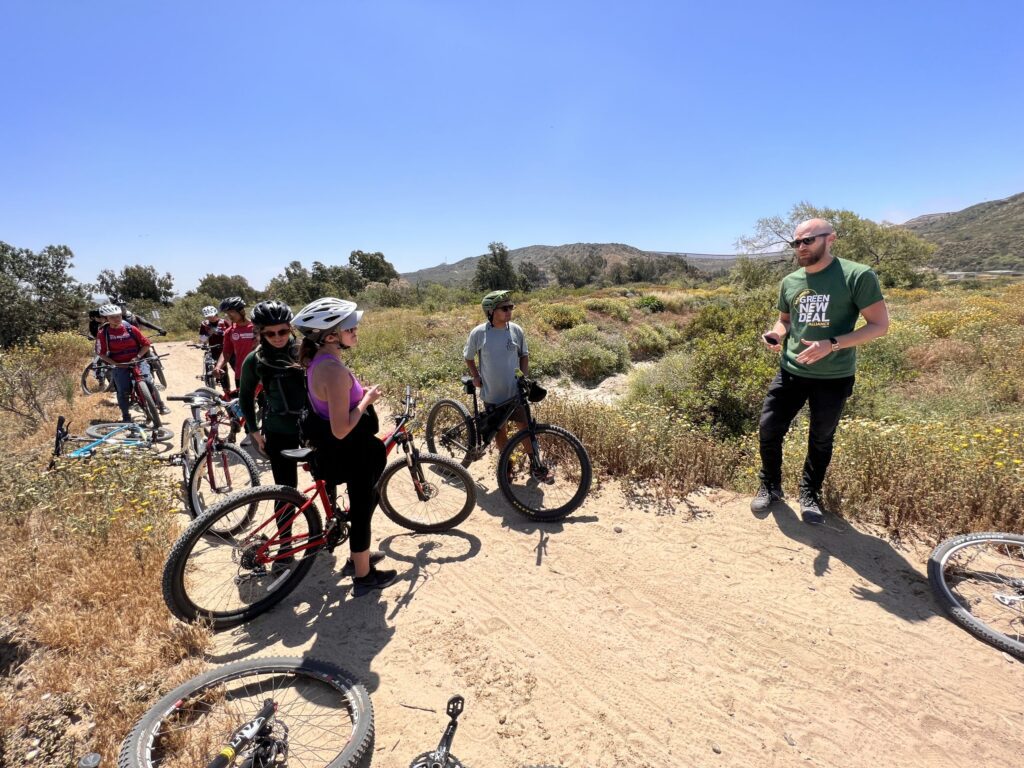

Next, we parked our bicycles along a portion of the Arroyo Cañon Matadero Wash overlooking a field of trash and debris. Along with recounting the long history of community-led cleanups and activism in the area, Policy Coordinator Mitch Silverstein of Surfrider Foundation San Diego shared several critical updates on their Clean Border Water Now Campaign. We learned about the transboundary water pollution solution selected by the Environmental Protection Agency, the successful resolution of Surfrider’s Clean Water Act lawsuit settlement, and what these milestones could mean for the future of clean water and environmental justice in the Tijuana River Watershed. Read their detailed blog, Surfrider Lawsuit Improves Ocean Water Quality and Protects Public Health at U.S.-Mexico Border, to learn more.
Tijuana River Valley Regional Park Campground
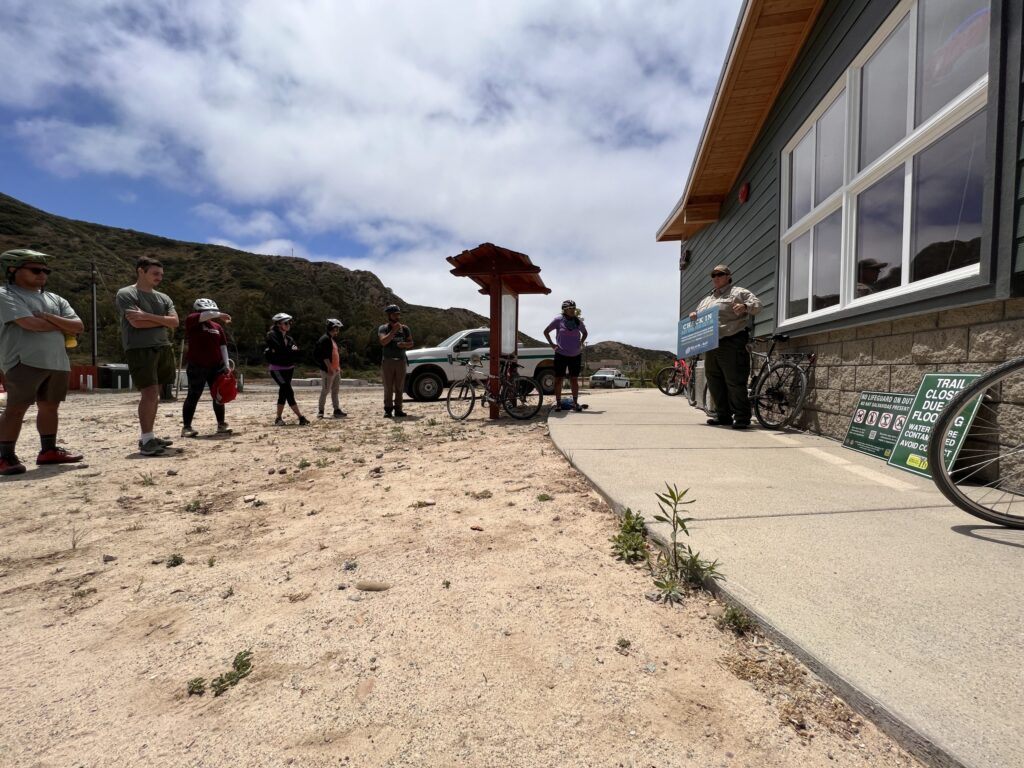

After a short refreshment break at the Tijuana River Valley Regional Park Campground, we learned about the recent addition of the 79-acre campground to the 22.5 miles of trails and amenities on the property. Due to the area’s low-lying geography, proximity to the coast, and other factors, access to certain trails can sometimes be affected by flooding or other water-related issues. Park rangers manage the campground within the County of San Diego Parks and Recreation department. The County’s Department of Environmental Health and Quality is responsible for designating beach and public health advisories and closures due to water quality and pollution.
Spooner’s Mesa
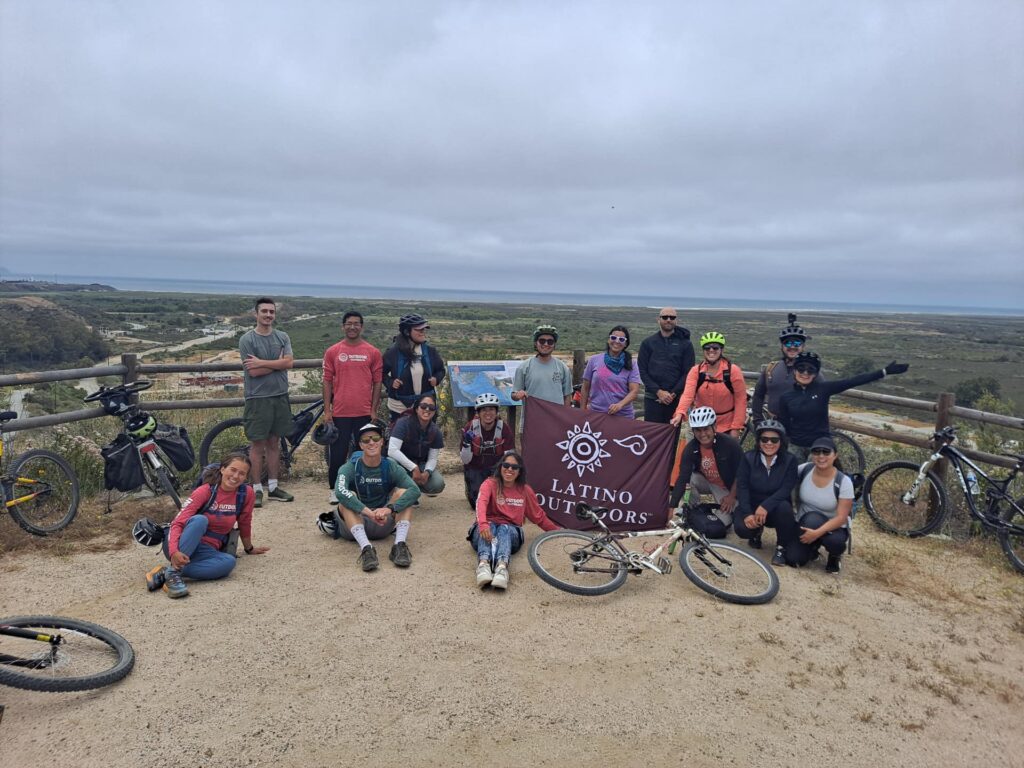

From the campground, we biked up a steep incline to reach Spooner’s Mesa, a blustery outlook with awe-inspiring views of the Tijuana River Valley and the Pacific Ocean. Public Policy Manager Sonia Diaz and Executive Director Ben McCue of Outdoor Outreach guided us in a conversation about the unique native plants thriving in the convergence of riparian, salt marsh, dune, upland, and beach ecosystems. They shared their perspectives on the importance of increasing awareness and access to beautiful natural spaces in historically underserved communities, especially among children and families, and the need for more opportunities to bring people together in nature through programs and initiatives like theirs.
To that end, Ben and Sonia brought state bill AB-2975 to the group’s attention, also called Department of Parks and Recreation: Community Access Agreements: Interpretive Services and Visitor Services. The bill, currently making its way through the legislative process, would allow state parks to enter into ongoing, cooperative agreements with community groups like Outdoor Outreach to ensure the park systems are preserved and open for public use and enjoyment. This bill would dramatically lower the barriers for similar organizations to offer meaningful recreational programs in places like Border Field State Park.
Border Field State Park
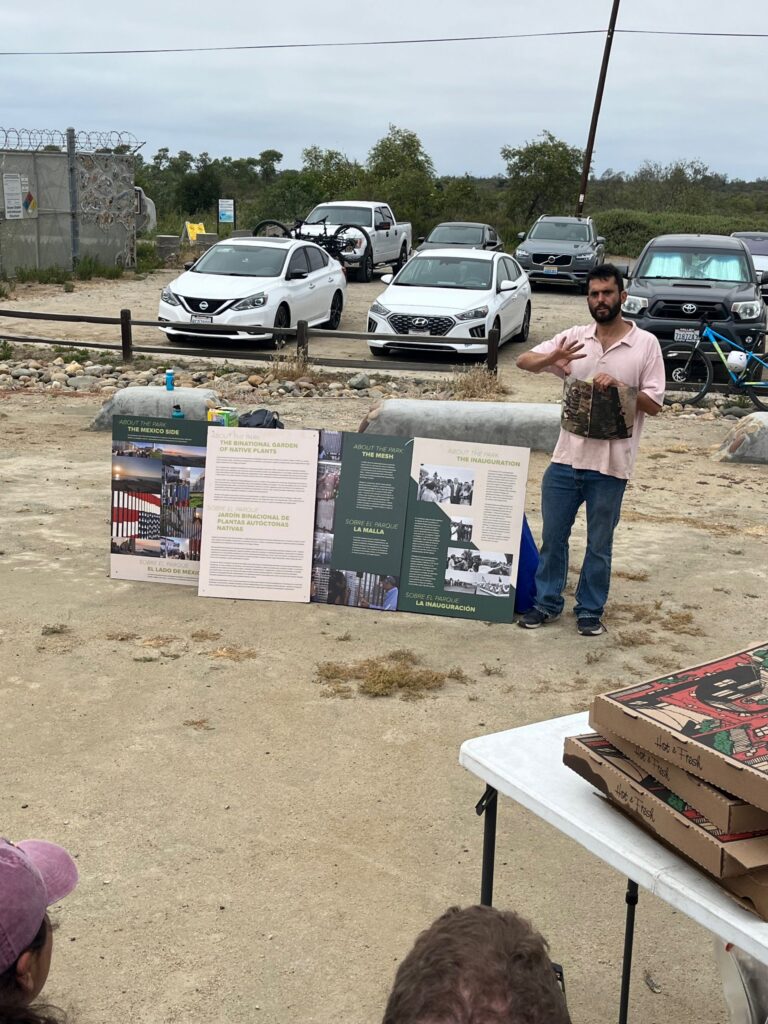

We concluded the tour with slices of delicious pizza and two final speakers. We listened to Dan Watman with Friends of Friendship Park tell the origin story of the Binational Garden of Native Plants inside Friendship Park. He spoke of the heartwrenching struggle and neverending campaign to keep the park accessible, beautiful, and open to families and loved ones separated across the border. In addition to regular closures by Border Patrol, the only access road to the park, Monument Road, is often rendered impassable by seasonal flooding. Monument Road ends over a mile from Friendship Park, creating further access difficulties for those with health issues or physical disabilities. Dan also spoke of his plight in nurturing the garden over the years and the difficulties he faced over limited access due to ongoing COVID-19 impacts and other administrative restrictions.
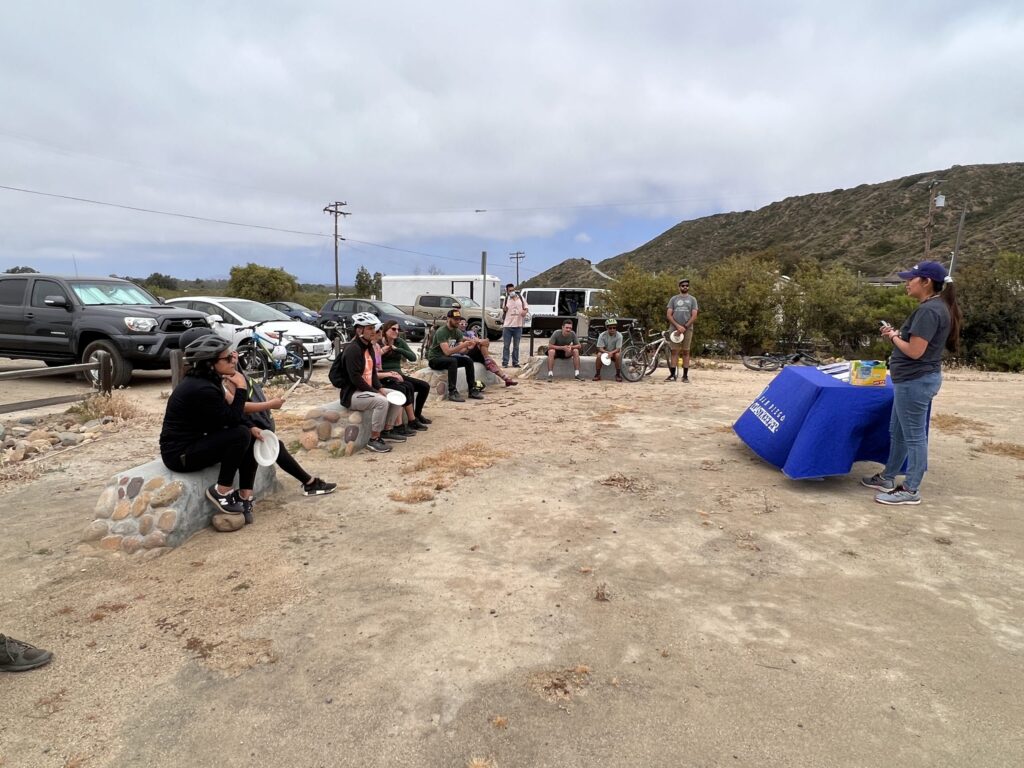

Community Policy Coordinator Lucero Sanchez spoke about the importance of outreach events like Wheels on the Watershed and the role of advocacy, education, science, and policy in affecting change. She emphasized the connections between the issues we saw along the tour to the need for additional stormwater infrastructure funding and responsible development to protect and restore water quality in San Diego. She, along with Communications and Outreach Manager Ally Senturk, highlighted Coastkeeper’s scientific work in the Tijuana River Watershed, including testing sediment within the Goat Canyon Sediment Basins in partnership with the Tijuana River National Estuarine Research Reserve and our decades of longstanding support and advocacy for solutions addressing the toxic border sewage crisis. Goat Canyon, only steps away from where Ally and Lucero spoke, is the site of the infamous trash boom featured in many stories about pollution in the Tijuana River Valley.
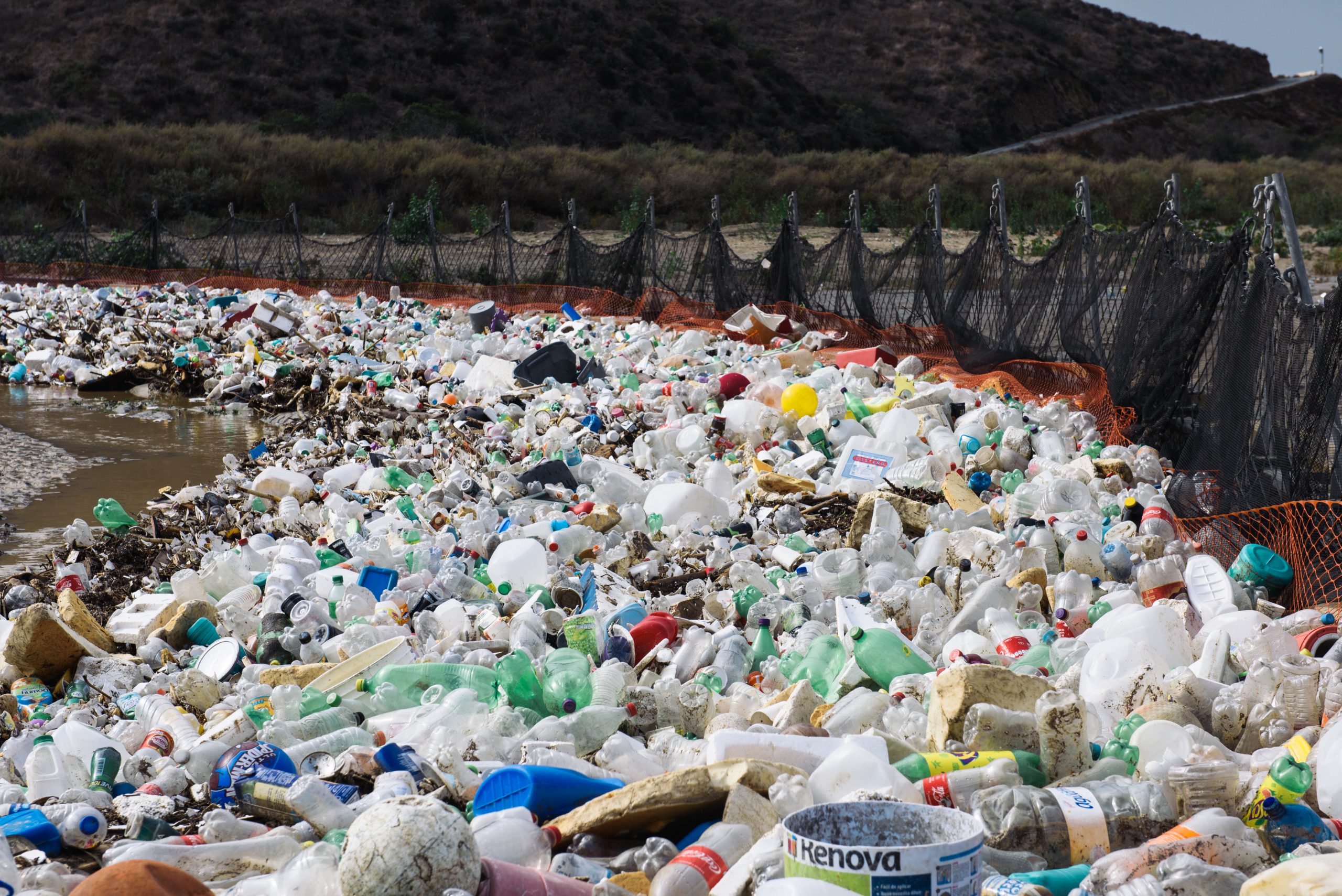

Highlighting Environmental Justice Issues in San Diego
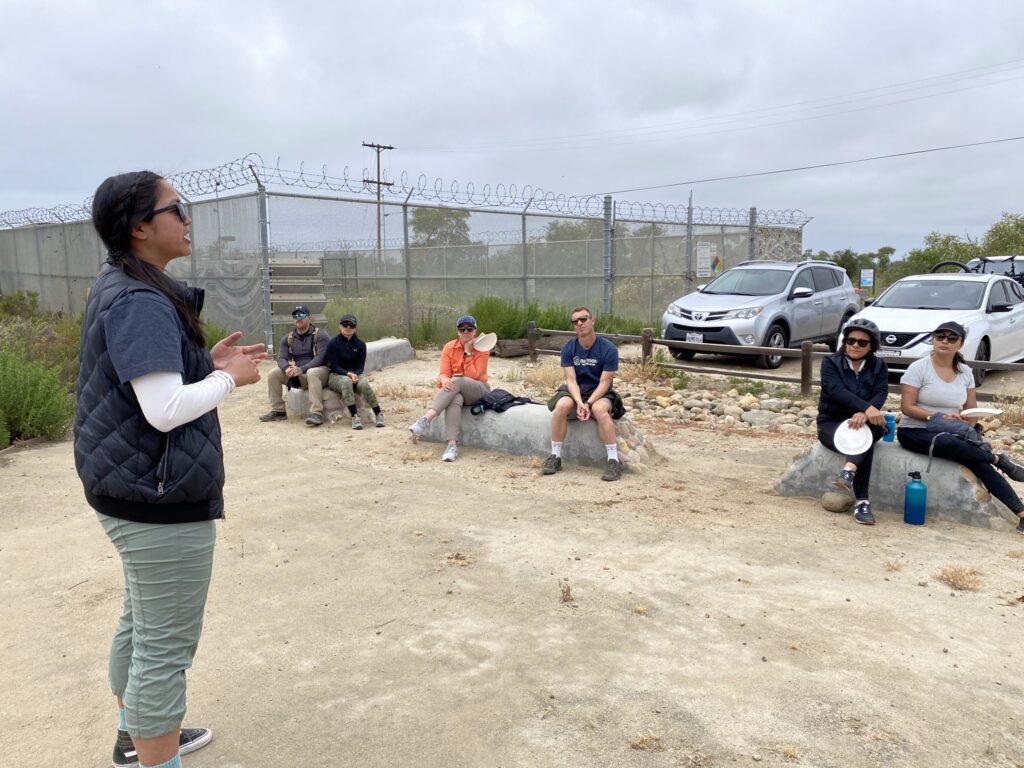

Spreading awareness and support for environmental justice issues are critical to our work at San Diego Coastkeeper. With programs like our BIPOC Youth Science Program, we are committed to making equity, justice, and inclusion a core part of our organizational culture and leadership.
Thanks to our internal marketing and media expertise, we helped develop the branding and communications for Wheels on the Watershed, including media advisories, press releases, and a partner content toolkit that resulted in media coverage. Check out Wheels on the Watershed highlights environmental issues at the border by CBS 8’s Tim Blodgett.
About Wheels on the Watershed
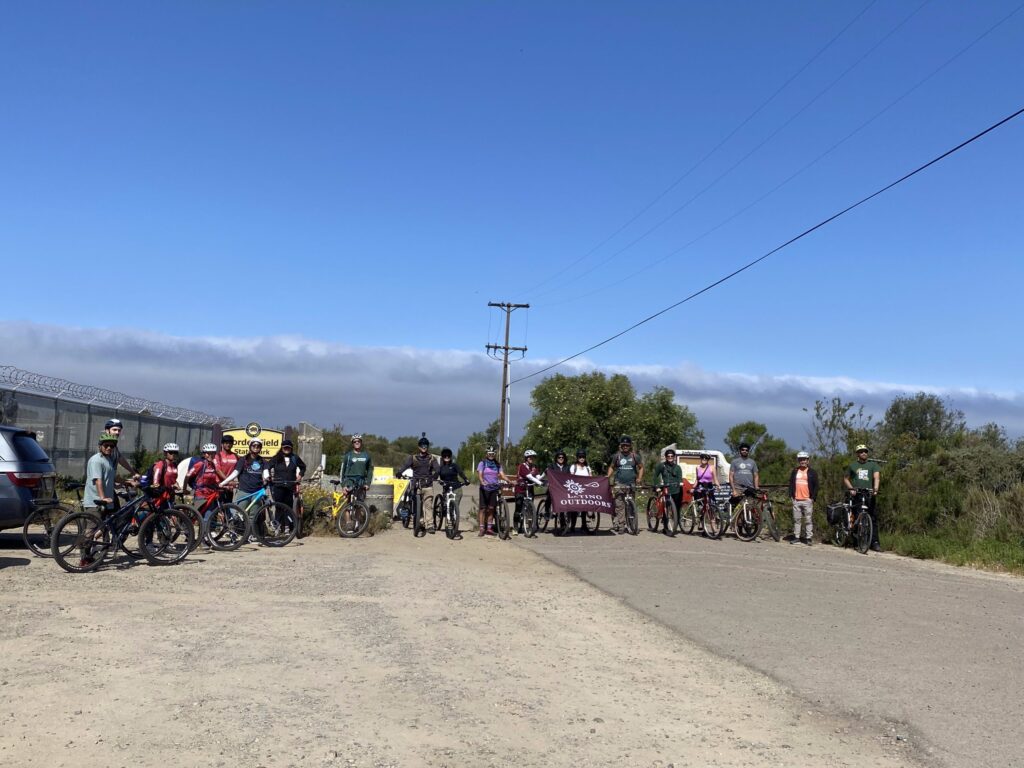

Latino Outdoors San Diego presented Wheels on the Watershed: Environmental Justice at the Border on Saturday, May 7, in collaboration with Environmental Health Coalition, Outdoor Outreach, San Diego Coastkeeper, San Diego County Parks and Recreation, and Surfrider Foundation San Diego.














